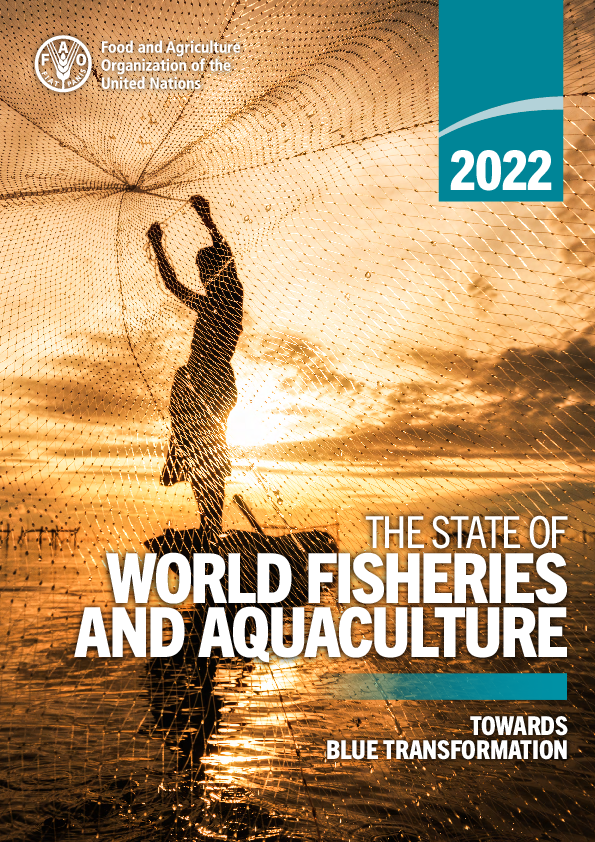 Read this article in French
Read this article in French- Share this article
- Subscribe to our newsletter
The State of World Fisheries and Aquaculture 2022
Significant growth in aquaculture has driven global fisheries and aquaculture production to a record high as aquatic foods make an increasingly critical contribution to food security and nutrition in the 21st century. This is one finding in the latest edition of The State of World Fisheries and Aquaculture (SOFIA) report from the UN Food and Agriculture Organization (FAO), published at the end of June 2022.
Aquaculture has grown faster than capture fisheries in the last two years and is expected to expand further over the next decade. The growth in aquaculture, particularly in Asia, lifted the total production of fisheries and aquaculture to an all-time high of 214 million tonnes in 2020, comprising 178 million tonnes of aquatic animals and 36 million tonnes of algae.
The production of aquatic animals in 2020 was 30 per cent higher than the average in the 2000s and more than 60 per cent above the average in the 1990s. Record aquaculture output of 87.5 million tonnes of aquatic animals was the main driver of these outcomes.
The global consumption of aquatic foods (excluding algae) has increased at an average annual rate of 3.0 per cent since 1961 – almost twice that of annual world population growth – and now stands at 20.2 kg per capita, more than double the quantity consumed in the 1960s.
Over 157 million tonnes, or 89 per cent of aquatic animal production, was used for direct human consumption in 2020, a slightly higher volume than in 2018, despite the impact of the COVID-19 pandemic. Aquatic foods accounted for around 17 per cent of the animal proteins consumed globally in 2019, compared with 23 per cent in lower-middle-income countries and more than 50 per cent in parts of Asia and Africa.
Asian countries were the source of 70 per cent of the world’s fisheries and aquaculture production in 2020, followed by countries in the Americas, Europe, Africa and Oceania. China remained the top fisheries producer, followed by Indonesia, Peru, the Russian Federation, the United States, India and Viet Nam.
More needs to be done to feed the world’s growing population while enhancing the sustainability of stocks and fragile ecosystems and protecting lives and livelihoods in the long-term, according to the authors. FAO promotes Blue Transformation, a visionary strategy for meeting the twin challenges of food security and environmental sustainability while ensuring equitable outcomes and gender equality.
(FAO/ile)
Read more and download the report from the FAO website
Rural 21, Issue 4/2021: "Tailwind for sustainable artisanal fisheries"





Add a comment
Be the First to Comment